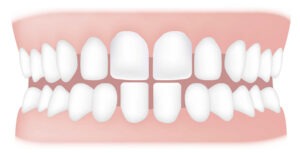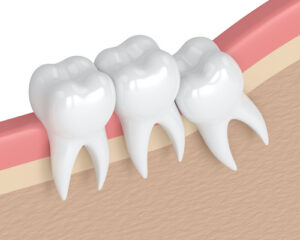Orthodontic treatments are a common procedure for correcting the alignment of teeth, improving bite function, and enhancing a patient’s overall oral health. However, not all orthodontic treatments can be corrected through traditional braces or Invisalign aligners. In some cases, surgical intervention may be necessary to achieve the desired results. In this blog, we will explore the reasons why some orthodontic treatments require surgery.
Severe Malocclusions

Orthodontic treatment is often used to correct malocclusions, which are abnormalities in the way the teeth and jaws fit together. However, some malocclusions are too severe to be corrected with braces or aligners alone. In these cases, surgical intervention may be necessary to move the jawbone and realign the teeth. This procedure is called orthognathic surgery and involves repositioning the upper or lower jaw or both to achieve proper alignment.
Orthognathic surgery is often recommended for patients with severe overbites or underbites, jaw deformities, or asymmetrical facial features. The procedure can also correct breathing problems caused by a narrow airway, which can lead to sleep apnea.
Impacted Teeth

Teeth that fail to erupt or grow properly are called impacted teeth. This condition can cause pain, infection, and damage to surrounding teeth and gums. Impacted teeth commonly occur with wisdom teeth, which can be difficult to access and extract without surgical intervention.
In cases where the impacted teeth are essential to maintaining a healthy bite, orthodontic surgery may be necessary. For example, if a patient’s canine teeth fail to erupt, surgical exposure and orthodontic traction may be needed to move the teeth into the proper position. For the best damon clear braces, visit Alborzi Orthodontics.
Dental Implant Placement
Dental implants are a popular option for replacing missing teeth. However, in cases where the jawbone is too narrow or too short to support an implant, surgical intervention may be necessary.
Do you require the surgery?
Adults with significantly poor bites or those who are self-conscious about their facial features may want to think about surgical orthodontics. However, before making a diagnosis, an orthodontist will assess the architecture of your mouth, including your jaws, teeth, and gums. Typically, between the ages of 16 and 18, jaw growth ceases. Orthognathic surgery may be required to realign the jaw and teeth when the patient’s jaws are out of alignment and causing functional and esthetic issues. Before deciding if surgery is the best course of action, an orthodontist will wait until the jaw has finished developing. For the best orthodontics of san mateo, visit Alborzi Orthodontics.
How it works?
Only a qualified oral and maxillofacial surgeon is permitted to undertake orthodontic surgery, and hospital settings are frequently used for the procedure. You will need to relax for at least two weeks after the procedure, which could take several hours. It is advised that you avoid working or attending school during this time because it is a significant surgery. It takes a few weeks for the healing process. Your bite will be “fine-tuned” by the orthodontist once the jaw has recovered. For 6 to 12 months, you may be required to wear braces or clear aligners that have been prescribed. You will then need to wear retainers to keep your teeth in their ideal positions.
Benefits of Orthognathic Surgery
A healthy and attractive smile is frequently the best result of orthodontic treatment for many of our patients. In order to correctly chew your food, speak more clearly, and smile with greater assurance, orthognathic surgery can treat malocclusions and jaw irregularities. People who have obstructive sleep apnea may also benefit from it as a form of treatment.
